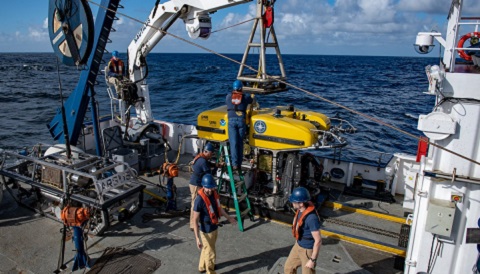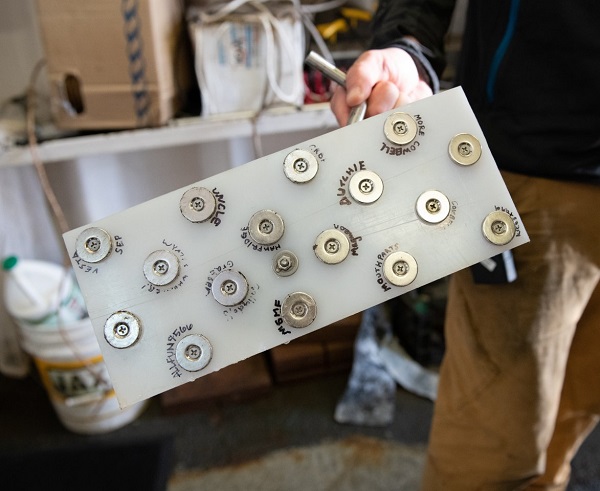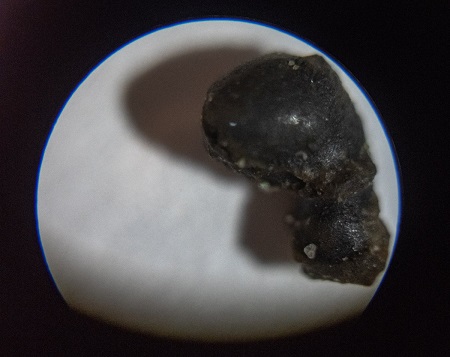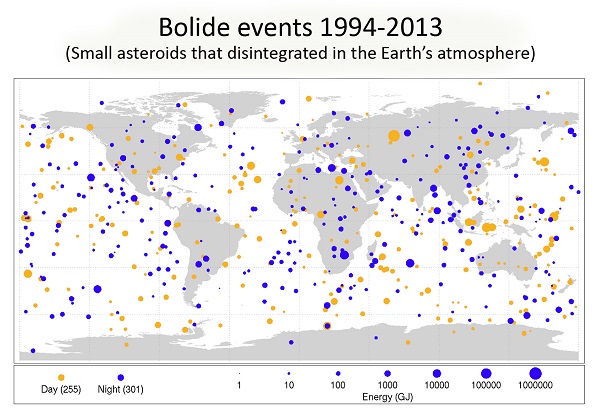An expedition off the coast of Washington state performs a first, recovering meteorite fragments from a documented ocean fall.
On the evening of March 7, 2018, a bright meteor lit up the skies along western Washington and Oregon. This event sent researchers scrambling, as it was well documented by ocean-seafloor seismometers, NOAA NEXRAD weather radar, sensor-buoy data, and eyewitness accounts. All of this pointed toward an estimated 2-ton object that broke apart off the Washington coast and fell as fragments into the sea. The fall was one of the largest seen on NOAA NEXRAD radars in the more than two decades the system has been in operation.
Now, a team of scientists from the Olympic Coast National Marine Sanctuary, University of Michigan, and NASA have announced the possible recovery of the first fragments from the fall.
A meteor that's at least as bright as Venus (magnitude –4) is referred to as a fireball, and those that break apart during their heated passage through the atmosphere are called bolides. These often terminate with a bright flash, showering ground below with an elongated trail of meteoritic debris known as a strewnfield. March 7th's bolide occurred 16 miles (25 km) off the coast of Grays Harbor County in Washington state.
Sifting Through Seafloor Silt

Susan Poulton / Ocean Exploration Trust
The hunt began early this month off the Pacific coast of Washington, over a suspected fall zone measuring 0.6 mile (1 km) square in the Olympic Coast National Marine Sanctuary. The search effort utilized the Exploration Vessel Nautilus, and the scientists on board started with a multi-beam sonar survey on July 1st , which looked for changes along the sea floor due to a possible impact strike.
Although this preliminary survey turned up nothing out of the ordinary, the team had better luck on the next day, when they dispatched a pair of ROVs (remotely operated vehicles) named Argus and Hercules to perform a 7-hour visual survey along the seafloor.

Susan Poulton / Ocean Exploration Trust
Researchers used a sediment scoop and suction hose equipped with powerful magnets to attract and sort out meteoritic debris, while backscatter radar aboard Nautilus probed the seafloor 328 feet (100 meters) below looking for solid rocky-metallic objects.
Then came the arduous 6-hour process of sifting through debris on the hunt for meteorites. A preliminary analysis by Marc Fries, Cosmic Dust Curator at NASA's Johnson Space Center, revealed two small fragments of possible cosmic origin. Both fragments display the smooth composition characteristic of a fusion crust, a thin surface layer melted at terrific temperatures during the meteorite's plunge through Earth's atmosphere.

Susan Poulton / Ocean Exploration Trust
"Retrieving even one small sample will be scientifically useful," says Fries in a Nautilus website interview, "not just because meteorites retain a record of conditions from the early solar system but because the fragmentation pattern of this fall is unlike any seen previously and understanding why will help assess impact hazards from future large-event meteorite infall."
If verified, the find will mark the first recovery of meteorites from the seafloor after an observed fall. The Nautilus meteorite hunt is part of a broader scientific mission carried out by the ship (an Ocean Exploration Trust vessel), involving deep sea archaeology, geology, biology and marine science.
'Meteorites shouldn't last long in saltwater, so finding material that is in reasonably good condition will be a clue," says Fries. "If we can get enough material we can perform a measurement of certain isotopes that gives us a 'terrestrial age' of how long a meteorite been on Earth... and was protected by cosmic rays present in space."
Most of the planet is covered with water, and most infalling space rocks simply end their careers as meteorites at the bottom of the sea. But ever more automated all-sky cameras are watching for bright bolides, and the techniques pioneered by the Nautilus expedition will go a long ways toward future seafloor recoveries of meteorites.
Read about a similar urban hunt for tiny rain-gutter meteorites was carried out by Project Stardust along the rooftops of Oslo and Paris — and a new survey watching the skies over Europe for fireballs.

NASA / Planetary Science
 1
1









Comments
Bob
July 12, 2018 at 1:01 am
Interesting article.
You must be logged in to post a comment.
You must be logged in to post a comment.